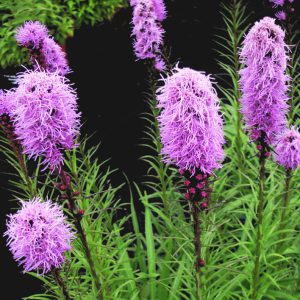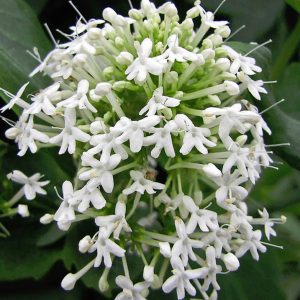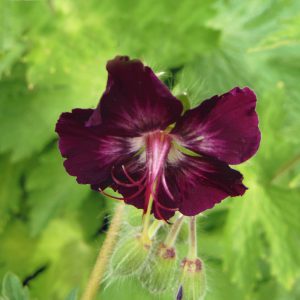- 1-9 pkts $4.50
- 10 pkts FREE
- Express post $12
Clematis viticella
ITALIAN CLEMATIS
Clematis viticella is one of the most beloved and historic of climbing Clematis.
It was brought from Italy to the garden of Queen Elizabeth 1 in 1569, and has been a favourite of gardeners ever since.
Covered with rich violet-blue saucers
It is no wonder that Clematis viticella has remained popular across the centuries, and in gardens all over the world, because it is unfailingly beautiful.
It simply covers itself with large, dangling saucers of blooms in summer and autumn, turning into a cascade of violet-blue.
Graceful light climber
Clematis viticella is a very fine and light climber, so it is ideal for scrambling through shrubs; amongst rose shrubs; up into fruit trees; on a fence or trellis; and over an arch.
It can scramble up to 4m. high to seek the light.
But it is never heavy or overwhelming for its host, cohabiting amongst the branches of a supporting shrub to the advantage of both.
Clematis love their heads in the sun and feet in the shade
Clematis are natural born climbers and designed to live in the same same space as their host shrub / tree.
So their preferred position is somewhere where they can have their feet in the shade, and then climb their way up to have their head in the sun.
But if your Clematis does not have an overhead shrub to provide shade at its feet – then cover the root area with a gravel mulch or some pavers to keep the roots cool.
Winter prune & chop back hard
There is often confusion about when to prune the various types of Clematis.
But Clematis viticella is easy – it flowers on new season stems – so prune in winter when you prune the roses; and chop it back hard to about 30cm. above the ground.
And then it will spend the spring and early summer climbing back up with fresh growth, and bloom its head off from mid-summer on.
Easy low maintenance climber
Clematis viticella is very frost hardy and can withstand temperatures down to approx. -30C.
Then it can also cope with summer heat as a native of Italy.
It is an exceptionally versatile and hardy Clematis, and rarely prone to Clematis Wilt Virus that can attack it’s larger flowered and more highly bred cousins.
Low maintenance & low water needs
It is also a low maintenance plant (other than the winter chop) and only requires normal, average garden watering.
Clematis viticella will be valiant during a period of dry.
Plus it can handle a wide range of soil types, from sandy to clay and all points in between.
Perfect rose companion
Clematis viticella also enjoys some lime, just as the roses do – so it is often grown to scramble amongst the branches of a climbing rose, then they both get a chop at the same time, and look divine together.
Rabbit, deer & even possums leave it alone
Bliss – all of our worst chewing foes are not attracted to the taste of Clematis and generally leave them alone.
SEED SOWING ADVICE:
Sow indoors at any time when temperatures are suitable.
Or sow seeds in a punnet outdoors in autumn for spring germination.
Sow indoors for best germination: First soak the seeds in warm (not boiling) water that has been previously boiled.
And leave the seed soaking in the water for 24 hours.
Then sow the seeds in a punnet on the surface of good quality seed raising mix.
Then lightly cover with seed mix, sand or vermiculite to a depth the same as the diameter of seed, approx. 1.5mm.
Now ensure the punnet is thoroughly moist all the way through by soaking it in a water-bath and allowing the moisture to percolate through from beneath.
Then wrap the moist sown punnet in cling wrap or a plastic bag, and place in the fridge (not freezer) for 6 weeks.
After 6 weeks of chilling in the fridge, remove the punnet, unwrap, and moisten thoroughly again.
Then place the moist punnet in a well-lit position (not in direct sunlight).
Temperatures around approx. 15C are best for optimum and rapid germination.
If placing outdoors in a cool shade house etc. then ensure the seed punnet is well protected from mice and birds by wrapping in some shade cloth or wire.
Continue to keep consistently moist by misting from a spray water bottle.
And covering the punnet with a clear cover or plastic bag will help to maintain consistent moisture.
Seeds begin to germinate in approx. 30 days.
But do not discard the punnet as it is natural for some seeds to be faster to germinate than others.
Seed Count: 3 seeds per pack (Seeds are scarce).
Click here for Nursery Open Days & Open Gardens Information
https://www.gardivalia.com.au/open-gardens
Click here to go back to Seeds Shop
https://www.seedscape.net.au/shop/
Related products
-
Add to WishlistAlready In WishlistAdd to Wishlist
-
Add to WishlistAlready In WishlistAdd to Wishlist
-
Add to WishlistAlready In WishlistAdd to Wishlist
-
Add to WishlistAlready In WishlistAdd to Wishlist





